|
Mastering the Art of French Cookingby Craig Stark 31 January 2023 |
Case Studies in First Edition Identification
What could be simpler? You have a copy of the above classic cookbook in hand, there's a 1961 date at the title page bottom, also the statement "FIRST EDITION" on the copyright page.
First edition. First printing. Done.
Minimally, you'd think that most booksellers would get this right with perhaps scattered misrepresentations. After all, a "first edition" statement alone, even if you're
guessing, will likely steer you in the right direction with lots of books at least most of the time (though exceptions to this rule are abundant). I'll get to the actual date
of publication shortly.
Some bad news: The Beck/Bertholle/Child groundbreaking publication of Mastering the Art of French Cooking, one of the 20th century's seminal cookbooks, is massively misrepresented
in commerce as a first edition when it is anything but. And I'd be hard put to come up with a title that creates as many issues as this one. For once it's not the publisher's fault!
Why? Clearly part of this mess is created by the sellers selling it. This is a title that's been in print with countless iterations for 62 years running, in its early years it
was primarily purchased for content, not edition state, and thus the majority of resellers are not by profession booksellers. If they research issue points at all, this is likely
to begin and end with copying other sellers' descriptions, something we booksellers affectionally call piggybacking, propagating errors by who
knows what factor of multiples.
There are many tripwires afoot. Let's start with book club editions. Doubleday was a player here years in advance of its merger with the Knopf Doubleday Publishing group. Among the
telltale signs of these ca. 1960's BCE's are a title page with no date, a copyright page with no additional printings indicated (only a 1961 copyright date embedded in a paragraph), an
unpriced dust jacket, the statement "Book Club Edition" at the bottom of the front dust jacket flap and a lighter weight and smaller format, the latter in step with the Doubleday
Book Club's consistent inattention to quality.
It may be obvious to you that the tendency here is to describe these as first editions because the copyright page indicates a 1961 date only, with no additional printings
stated. This follows the all-too-frequent practice of sellers using the infamous "no additional printings on copyright page" or similar wording as a hard and fast rule for
nailing down first edition identification. Exceptions to this "rule," of course, abound.
An aside: Doubleday Book Club editions are somewhat uncommon and command higher values accordingly.
I've covered the issue points for the first edition. The second printing states "PUBLISHED OCTOBER 16, 1961" at the bottom of the copyright page.
Later editions are indicated by later dates or publishing dates grouped by the total number of printings - or some variation of the two. To repeat, if there's nothing
stated at all at the bottom of the copyright page, it's a BCE. The tripwire here for misrepresentation is the fact that only one date is indicated with no additional dates.
Here we go again. This is the "one date rule." Example: "Published May, 1936" stated on the copyright page is the key issue point for Gone With the Wind. But then again, exceptions
to this "rule" teem.
Next. A second volume was published in 1970 along with a reprinting of the 1961 edition combined as a two-volume set in a slipcase. However, since there were no plans to
publish a second volume in 1961 (though it was discussed), the 1961 first edition is often mistakenly described as Volume One. It is not in a bibliographic sense unless an
actual first edition was swapped out with the issued edition - and this happens a lot, BTW. It's the equivalent of a marriage with partners sleeping in a double bed.
Frankly, attempting to attach any bibliographic sense to these sets is not worth bothering with. Sets were issued with varying volume one (and volume two printings). Some
have half title pages stating the volume number, some don't. Some "Volume One" dust jackets do state the volume number; some don't. Dates are all over the map. Notably, Bertholle's
name was dropped in Volume Two due to her lack of participation, and eventually Julia Child moved to top billing. And - at some point preceding this Bertholle and Becks names were reversed.
Had enough yet?
Notably, the first edition of Volume Two does include a "FIRST EDITION" statement, which is a valid and determinant issue point, though this has leaped to the top of the copyright
page. To complicate things further, there are identical 1961 Library of Congress numbers stated on the copyright pages of both volumes. Sometimes! Book club editions are wandering around as
well. I won't torment you with any more than this. I'm nearly a spent force just talking about it at all. The good news is that most of these sets sell for more or less equal outcomes -
and for prices worth bothering with ($50 to $100 or so) - as long as the slipcase and both dust jackets are present and condition is good.
Finally, I've saved the potentially most controversial point for last: the month of publication of the first edition. For as long as I've been a bookseller, I've never seen
any date but October, 1961 asserted as the date of first issue unless the actual undated first edition was in play, and even then the October, 1961 date is almost always dragged
out followed by clowns. There are two points to raise here. In early editions of this cookbook there is a page titled "A Note About the Authors" following the numbered pages.
This note is dated August, 1961 at the bottom of the page. Now, this doesn't at all establish that it was published in August, and I'm not asserting that it was. However, there is
strong evidence that it was first issued in September. Knopf was very consistent in designating first editions during this period with a "FIRST EDITION" statement on the copyright
page. Also, there is no month date on the first edition copyright page, only a 1961 date on the title page and a 10/61 code to the dust jacket flap.
This is supported by its Catalog of Copyright Entries entry as "28Sept61."
"28Sept61" represents the date that the Library of Congress received its two control copies - that is, copies of the actual first published edition - following or coinciding
with the release of the general issue. In my opinion, the COCE date trumps the 10/61 dust jacket code because I know of no instance when control copies were shipped to the LOC
preceding the date of issue. This does not suggest that booksellers marketing the first edition are or were mistaken in describing it as one, only mistaken when an October or later
date was used to establish this. And there remains a more remote possibility that the first edition was issued in August. Further research is needed. As for the dust jacket codes,
who knows? Publishers aren't always consistent in printing books with conforming dust jackets.
The takeaway here is that this innocent cookbook has become, over the years, a minefield of seller errors, misrepresentations, illegitimately married dust jackets, mixed sets, etc.,
and the passage of time seems only to exacerbate things. However, when all is said and done, it remains a solid seller, sometimes solidifying into four figures. When you list yours, be smart,
and you'll be fine.
Questions or comments?
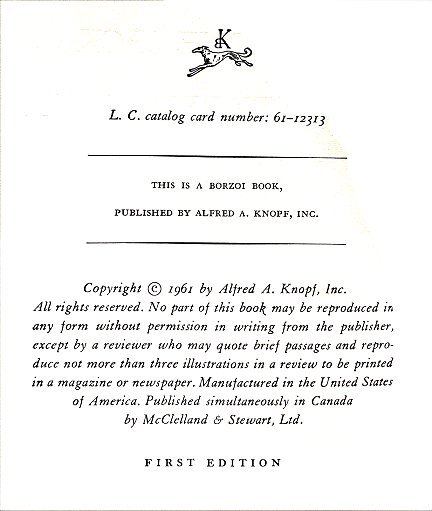
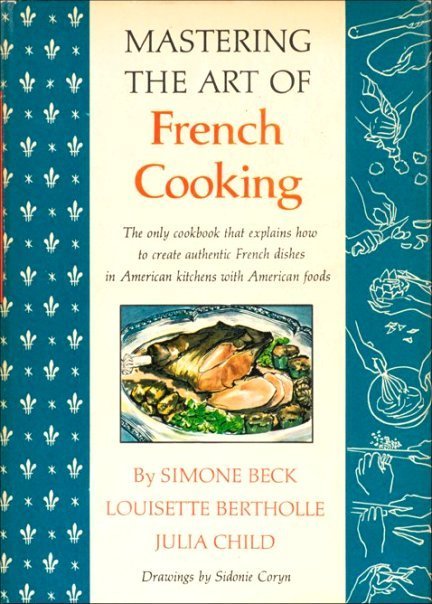
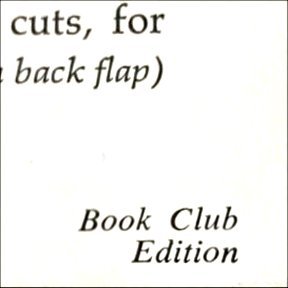
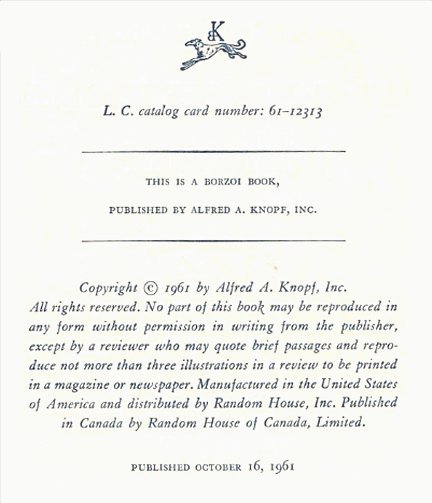
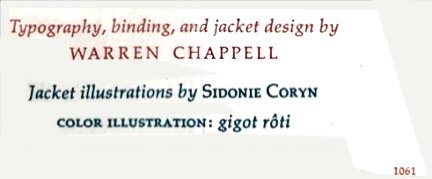

Contact the editor, Craig Stark
editor@bookthink.com
















